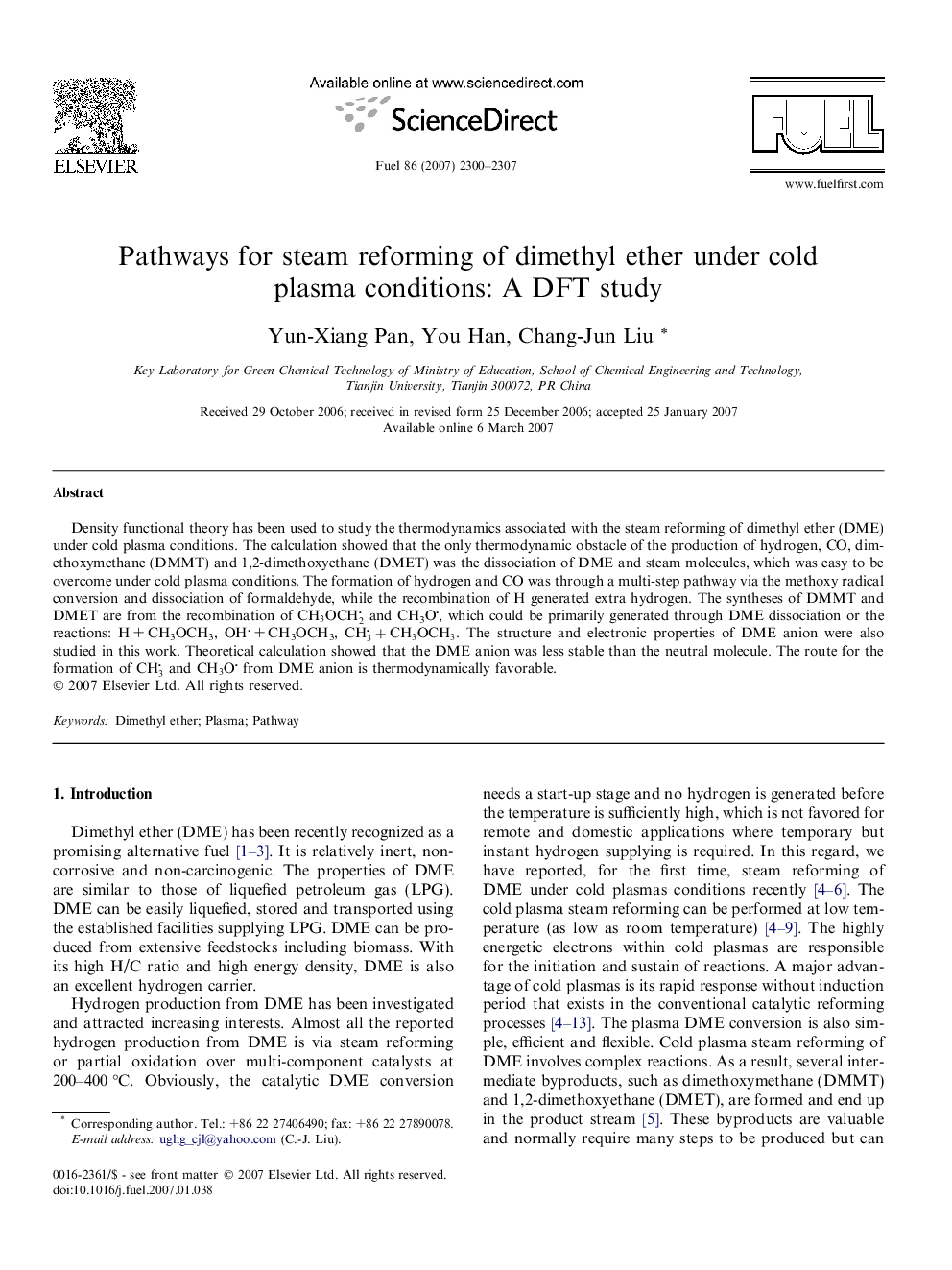| Article ID | Journal | Published Year | Pages | File Type |
|---|---|---|---|---|
| 208196 | Fuel | 2007 | 8 Pages |
Density functional theory has been used to study the thermodynamics associated with the steam reforming of dimethyl ether (DME) under cold plasma conditions. The calculation showed that the only thermodynamic obstacle of the production of hydrogen, CO, dimethoxymethane (DMMT) and 1,2-dimethoxyethane (DMET) was the dissociation of DME and steam molecules, which was easy to be overcome under cold plasma conditions. The formation of hydrogen and CO was through a multi-step pathway via the methoxy radical conversion and dissociation of formaldehyde, while the recombination of H generated extra hydrogen. The syntheses of DMMT and DMET are from the recombination of CH3OCH2 and CH3O, which could be primarily generated through DME dissociation or the reactions: H + CH3OCH3, OH + CH3OCH3, CH3+CH3OCH3. The structure and electronic properties of DME anion were also studied in this work. Theoretical calculation showed that the DME anion was less stable than the neutral molecule. The route for the formation of CH3 and CH3OCH3O from DME anion is thermodynamically favorable.
